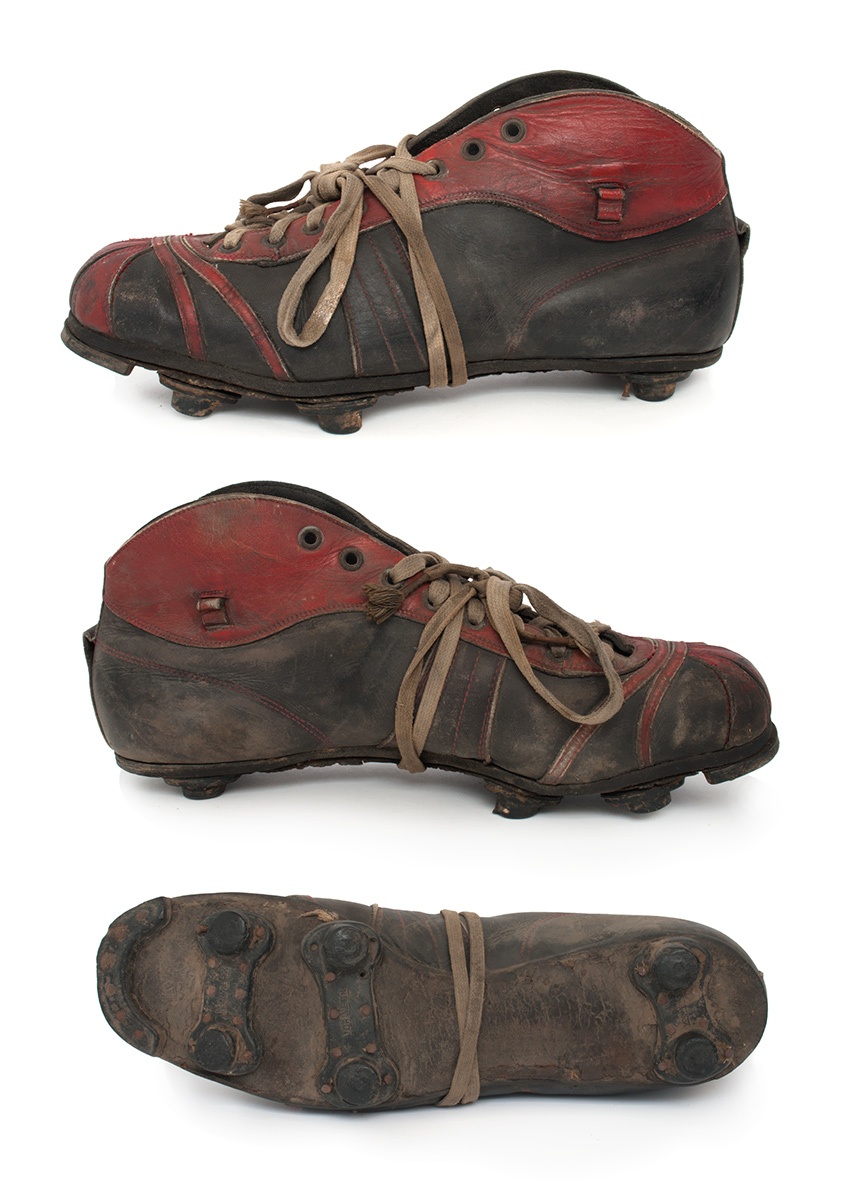PUMA-Fußballschuh mit einer genagelten Vorwerk-Zwillingsstolle aus dem Jahr 1948/49. Es handelt sich hier aller Wahrscheinlichkeit nach um das Modell "Atom".
Aus einem PUMA-Pressetext: ""PUMA-Firmengründer Rudolf Dassler beginnt bereits 1948 - kurz nach Gründung des Unternehmens - mit der Entwicklung von neuartigen Fußballschuhen, die einen optimalen Einsatz bei jedem Wetter und verschiedensten Bodenverhältnissen gewährleisten.
Das Ergebnis dieser Entwicklungen ist der PUMA-Fußballschuh "ATOM", den Dassler bereits 1948/49 auf den Markt bringt. Der deutsche Nationalspieler Herbert Burdenski erzielt im Spiel gegen die Schweiz am 22. November 1950 mit dem "ATOM" das erste Nachkriegstor und gleichzeitig den Siegtreffer für Deutschland."
en




